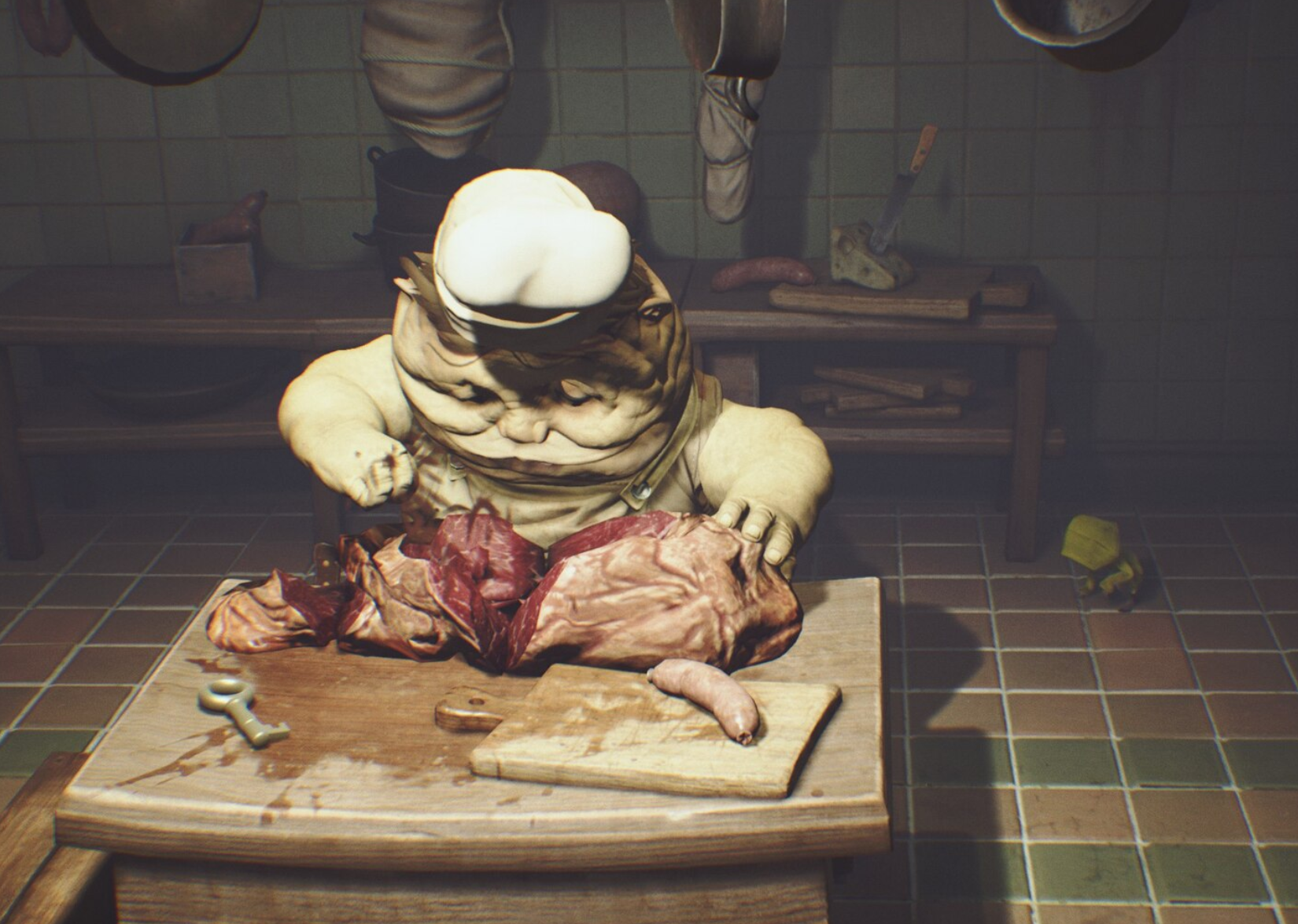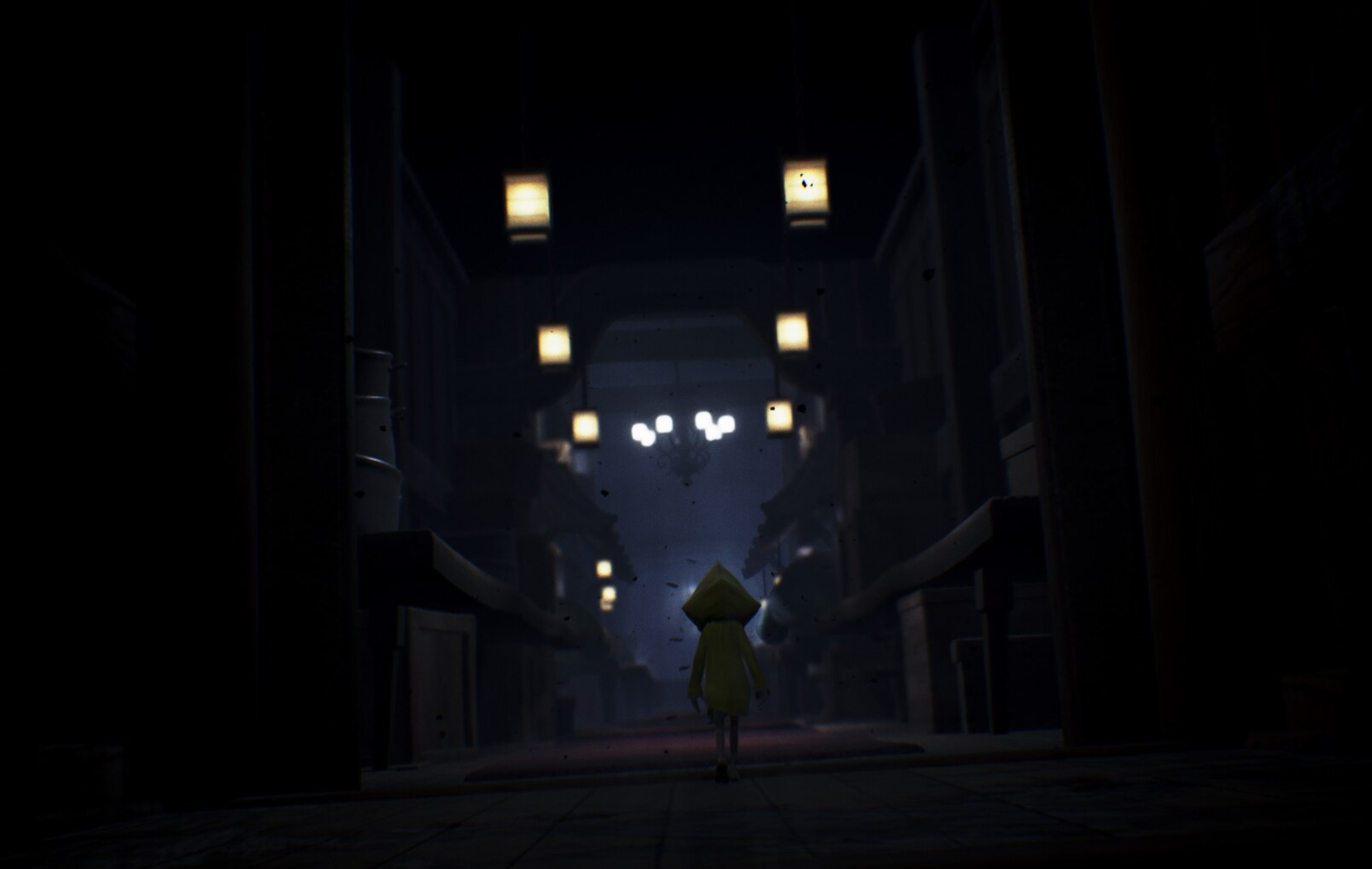Game Review: Little Nightmares
Few games capitalize on my core review principle ‘judge what is there’ like Little Nightmares. In the realm of video game reviews, titles are frequently criticized and characterized by what they lack rather than what they present. In the worst cases these judgments are doled out from a point of ignorance, where the reviewer wants a title to be something that the developer never intended, but more often these poor reviews come from a misguided presumption of understanding. Of course a game should have X or Y feature; it has been standard in the genre for years is the order of the day. Many of these instances seek things that would undermine another critical part of the gameplay experience, but few reviewers consider this.
Little Nightmares is a game with a lot of blank space, where many of the expected systems, attributes, and mechanics of a title are simply absent. What remains is something pure, a pristine reminder of why people love video games, why the format offers something that can’t be replicated in other media, and like horror itself, why they should be taken seriously by the broader critical community.
Looking for my review on Little Nightmares 2? It can be found here.
What is present is of such exquisite quality that anyone who can enter without expectations has the potential to find something deeply memorable and affecting. Unlike most titles, Little Nightmares stayed with me long after I put it down, and the part of me that learned to love video games as a medium for experience wanders back there from time to time even months removed from my playthrough.
Waking Up
Little Nightmares is a third-person puzzle stealth horror game from Tarsier Studies where you take on the role of Six, a barefoot girl who traipses about in a raincoat (unavoidably reminiscent of Georgie from Stephen King’s IT) as she tries to escape The Maw, a massive underwater vessel filled with oversized evils who will seek to consume Six anytime they are alerted to her presence.
Throughout the course of Little Nightmares, you’ll learn next to nothing about Six’s background, but you will share her terror as she navigates a whimsical, twisted netherworld filled with viscous childhood monster archetypes. The story here is an abridged fable where the diminutive heroine emerges from obscurity to challenge and elude horrors whose evil nature is elemental, understood in one half-glimpse as assuredly as it is in hours of study.
I began with discussing the blank spaces on the canvas because despite what Little Nightmares lacks–clear or coherent story, complex mechanics, multi-dimensional characters, etc.–it finishes its short three-to-four-hour run feeling like a complete and resonant adventure. The terrors in the story are ones we all knew as children: the garish, smothering fear of imagined movement after the lights went out. The fear that shadows could adopt when observed alone, pooling and sliding together to form something that colored outside the lines of the daytime world. A tall man with a twisted grin and long limbs we might not escape, his hat pulled low and eyes shining. A lunchroom cook whose sheer size was an unspoken threat to our little bodies. The paralyzing fear of meeting the eyes of a stranger behind a mask. Little Nightmares isn’t subtle–it puts the monstrosities right out there in the open and begs you not to draw their eye. When you do, the ramifications are swift and ghastly, and players will cringe at every accidental death they inflict upon Six.
Twenty minutes into playing Little Nightmares, I understood the hype, and recognized that the endless plaudits this game has received were well-deserved. Viewed in isolation, some of its parts could be viewed extremely critically, but when they all come together we have a masterpiece.
Dream Logic
There’s wonderful nuance in the gameplay, and moments when you discover precise intentionality that show the developers were really thinking closely about their puzzles. I was continually impressed by the amount of creativity in the level design–the environments are believable for as much as an Alice in Wonderland-type hellhole can be, with items in sensible places and passageways that feel like they would be a practical part of the fantasy. It felt like Six was sneaking and sprinting through a nightmarish 20th century Disney environment, where evil giants lived, worked, and slept, rather than a series of setpiece environs built to challenge wee intruders. Moreover, the monsters that pursued her were living things, designed and imbued with actual personalities that impacted gameplay.
In one memorable moment, a murderous chef paused his search for me amid a stack of crates to pocket a wedge of cheese. This not only gave me a brief moment to sneak away, but showed me that this monstrosity had more interests than just chasing an intruder. Moments like this are sprinkled throughout Little Nightmares, and go a long way to richening the game’s charm.
All in all, it was a very smooth ride, and the bumpiest parts came at the beginning before my eye for the world had fully developed.The very nature of navigating a dark, cluttered environments means you’ll occasionally fall in love with trying to get to something that is not the critical path, and might not even accessible. More than once I sent Six to a brutal end trying to leap for something that couldn’t be grasped. These instances were frustrating, but not so troublesome as to tarnish the experience.
By the second hour I was seeing most of the puzzles correctly, and having more fun than I’ve had in quite some time. Ninety percent of the instances where I struggled with a puzzle I was simply overthinking it.
If there’s a problem in Little Nightmares, it’s the autosave system. Checkpoints are a dice toss, you can log into the game to find yourself five or ten minutes back from where you were, and this is a notable pain point if you’ve done a lot of running or completed a puzzle. The autosave indicator is often recording progress of some sort–a collectible etc–but this doesn’t necessarily mean you can quit the game and pick up from that spot again. Suffice to say you may get stung by this a time or two, and if you are looking for a good spot to quit it’s probably at the clear end of a chapter.
At the time of writing, Little Nightmares is a five-year-old game with a sequel, and you’ve probably heard all there is to hear about it if you’ve not played it already. On the outside chance you’ve found your way here and are yet to play the game, I’d strongly encourage you to pick it up and give it a go. This one is worth the full price, and the developers certainly deserve the support, as they’ve created something that will live in the memory for far more time than it takes to complete, and that, perhaps more than anything else, is the hallmark of great horror.
Score: 9.2
Strengths:
Impeccable thematic design that captures the terror of childhood
Clever puzzles
Immersive graphics and sound design
Weaknesses
Finicky save system
Mouse and keyboard controls leave a lot to be desired–controller recommended
Short playtime (3-4 hours)





